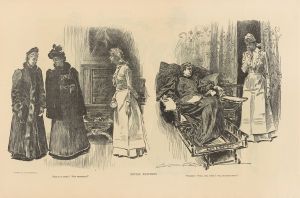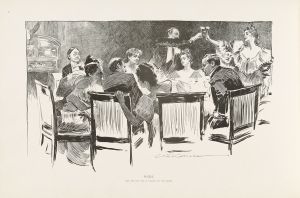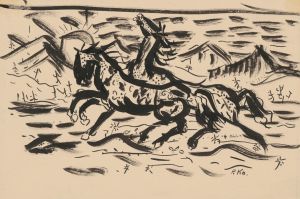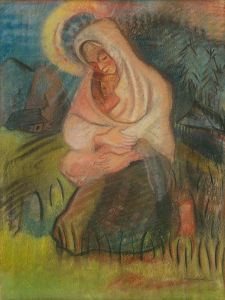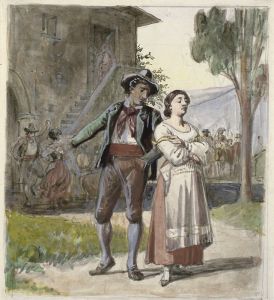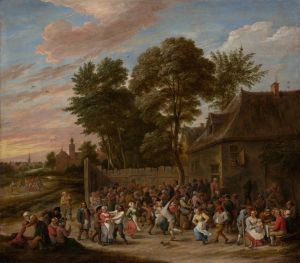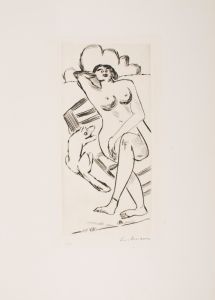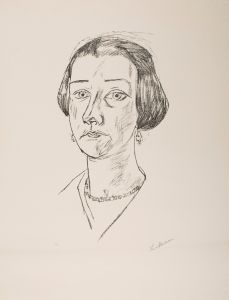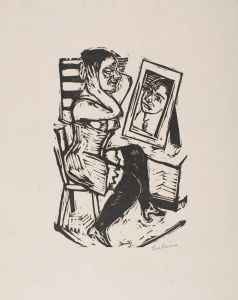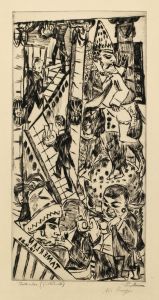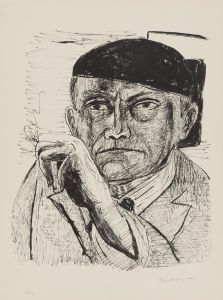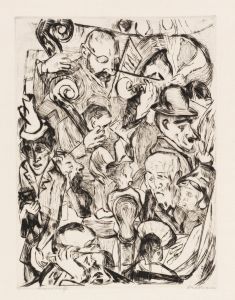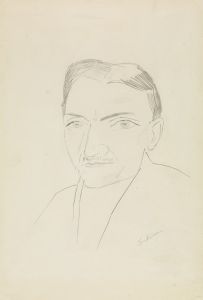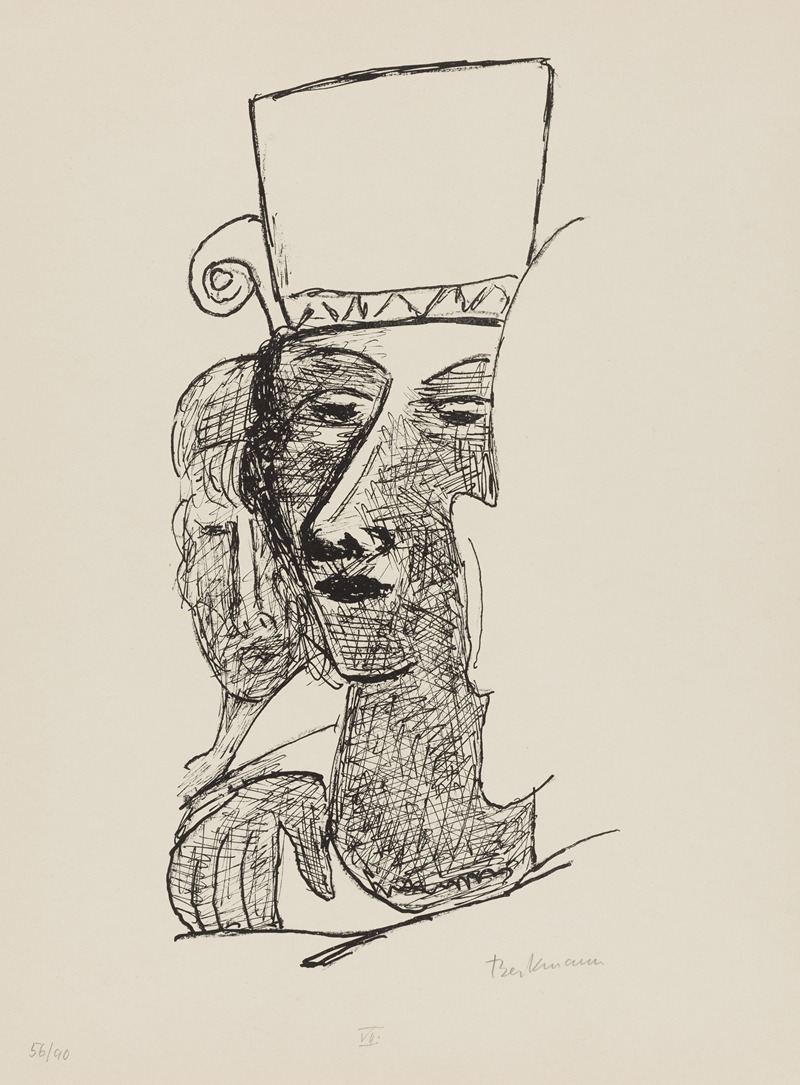
Dancing Couple
A hand-painted replica of Max Beckmann’s masterpiece Dancing Couple, meticulously crafted by professional artists to capture the true essence of the original. Each piece is created with museum-quality canvas and rare mineral pigments, carefully painted by experienced artists with delicate brushstrokes and rich, layered colors to perfectly recreate the texture of the original artwork. Unlike machine-printed reproductions, this hand-painted version brings the painting to life, infused with the artist’s emotions and skill in every stroke. Whether for personal collection or home decoration, it instantly elevates the artistic atmosphere of any space.
"Dancing Couple" is a painting by the German artist Max Beckmann, completed in 1946. Beckmann, a prominent figure in the Expressionist movement, is known for his vivid and often complex compositions that explore themes of human experience, identity, and the tumultuous socio-political landscape of his time. This particular work is a testament to his mature style, characterized by bold colors, dynamic forms, and a deep psychological insight.
The painting depicts a couple engaged in a dance, capturing a moment of intimacy and movement. Beckmann's use of color and form in "Dancing Couple" is striking; he employs a rich palette and strong, defined lines to convey the energy and emotion of the scene. The figures are rendered with a sense of weight and presence, typical of Beckmann's work, which often imbues his subjects with a monumental quality.
Max Beckmann was born in Leipzig, Germany, in 1884 and became one of the leading artists of the 20th century. His career was significantly impacted by the political upheavals of his time, particularly the rise of the Nazi regime, which labeled his work as "degenerate art." This forced Beckmann to leave Germany in 1937, after which he spent time in Amsterdam before eventually moving to the United States in 1947. His experiences during these years influenced his artistic output, leading to works that reflect both personal and universal themes of exile, identity, and resilience.
"Dancing Couple" was created during Beckmann's time in Amsterdam, a period marked by both professional success and personal challenges. Despite the difficulties he faced, Beckmann continued to produce art that was both innovative and reflective of his inner world. The painting is often interpreted as a reflection of Beckmann's exploration of human relationships and the complexities of social interaction.
The composition of "Dancing Couple" is notable for its balance between abstraction and figuration. Beckmann's figures are stylized yet recognizable, a hallmark of his approach that allows viewers to engage with the emotional and psychological dimensions of his work. The dance itself can be seen as a metaphor for the interplay of forces in life, a theme that Beckmann revisited throughout his career.
Beckmann's influence on modern art is significant, with his work bridging the gap between traditional European painting and the emerging modernist movements of the 20th century. His paintings are celebrated for their depth, both in terms of technique and thematic exploration, and "Dancing Couple" is no exception. It stands as a testament to Beckmann's ability to capture the essence of human experience through his unique artistic vision.
Today, Max Beckmann's works are held in high regard and are featured in major museums and collections worldwide. "Dancing Couple" continues to be appreciated for its dynamic composition and the insight it offers into Beckmann's artistic and personal journey. The painting remains a significant piece within Beckmann's oeuvre, exemplifying his mastery of form and his profound engagement with the human condition.





